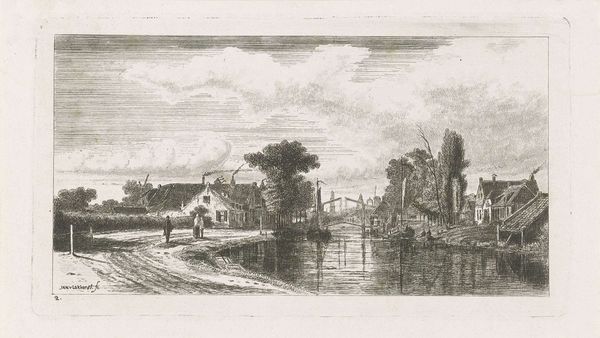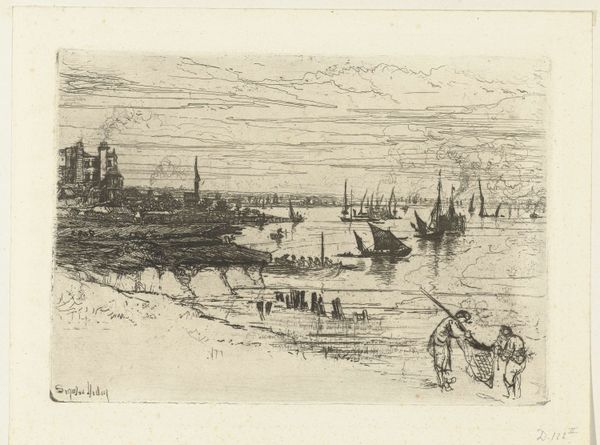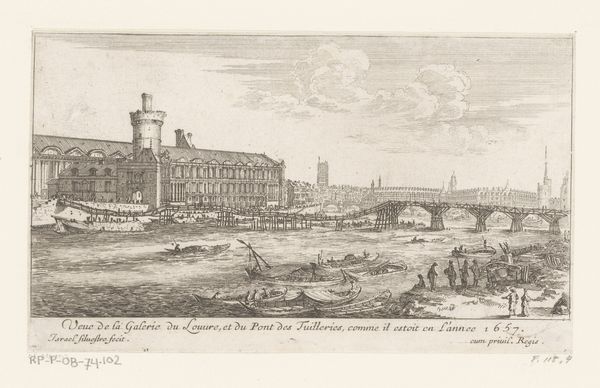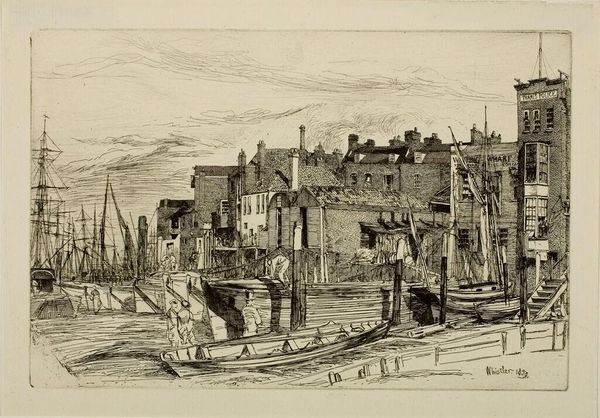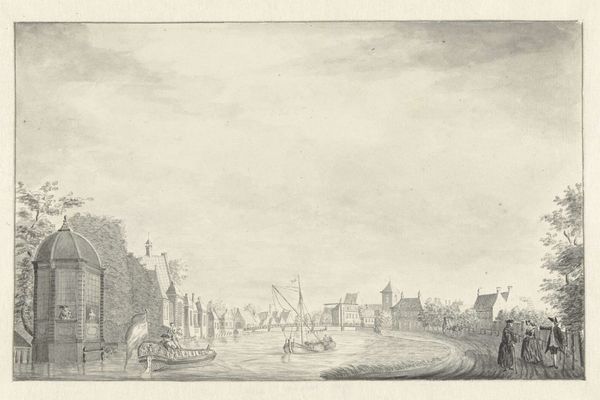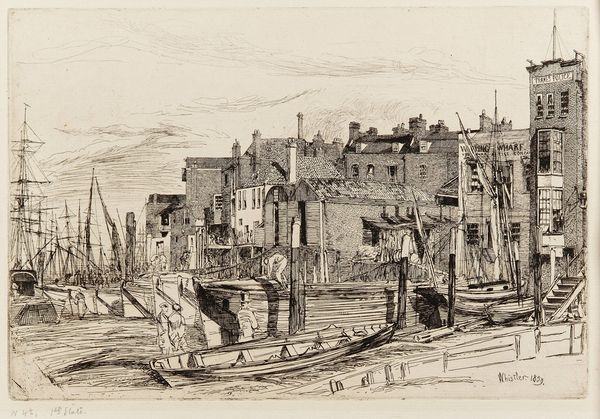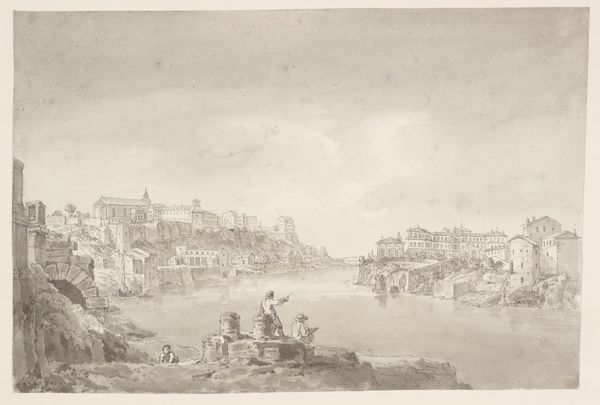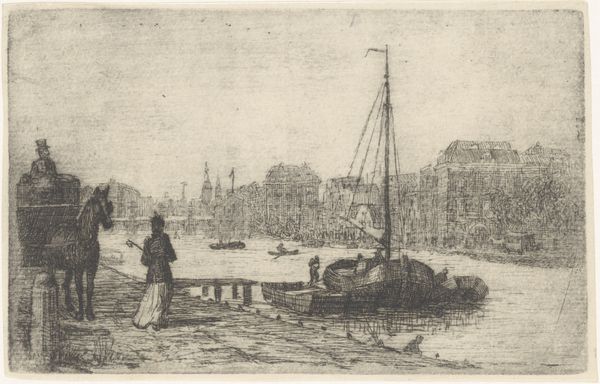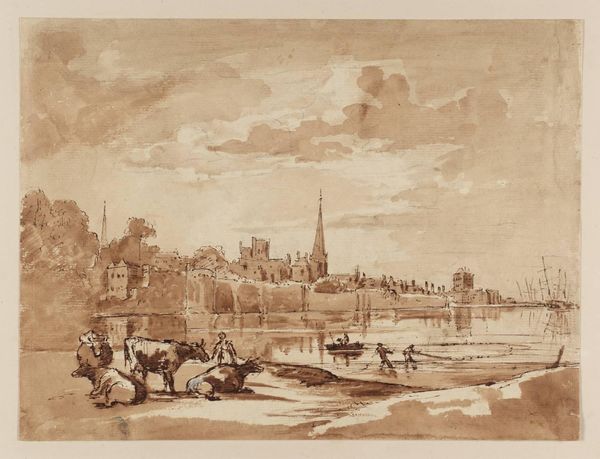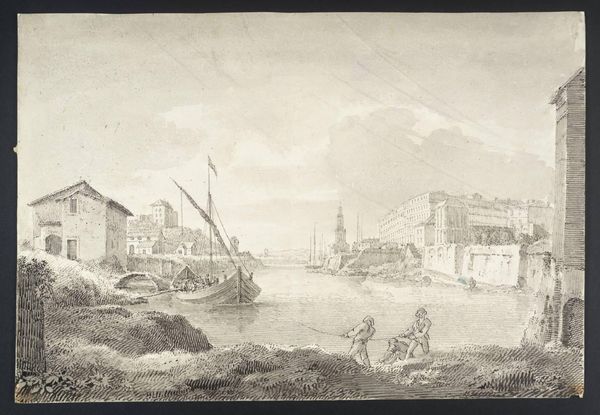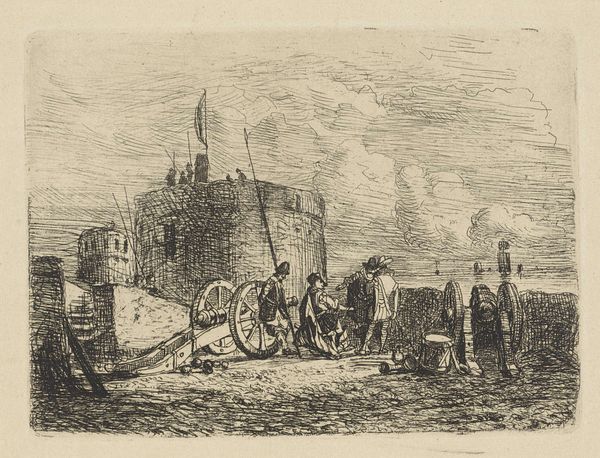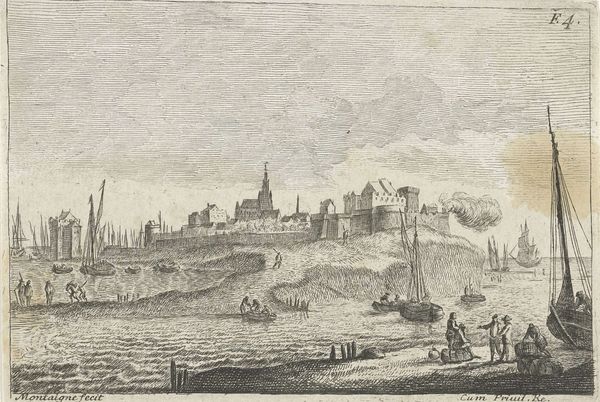
drawing, print, etching
#
landscape illustration sketch
#
drawing
#
light pencil work
#
dutch-golden-age
# print
#
pen sketch
#
etching
#
pencil sketch
#
old engraving style
#
landscape
#
personal sketchbook
#
pen-ink sketch
#
pen work
#
sketchbook drawing
#
cityscape
#
pencil work
#
genre-painting
#
realism
Dimensions: width 299 mm, height 198 mm
Copyright: Rijks Museum: Open Domain
Editor: This is Johan Conrad Greive's "Gezicht op de Stadhouderskade," made sometime between 1847 and 1877. It's a detailed etching showing a waterside scene in Amsterdam. The intricate lines create such a specific, almost nostalgic atmosphere... what catches your eye in this piece? Curator: Well, beyond the detailed rendering, the visual vocabulary here is fascinating. Notice how the artist positions figures – almost archetypes – at the fore, observing and interacting with the bustling river and construction work. Do you see how their clothing and activities act as visual cues, connecting us to the daily life and economic vitality of that era? Editor: Yes, and the cityscape in the background feels almost like a stage set, framing their activities. There's something very deliberate about the placement. Curator: Precisely! The architectural details are meticulously rendered, speaking to the pride and identity associated with the city. Think of those gas lamps – symbols of modernity, alongside more traditional transport like the horse and cart. Consider how this juxtaposition might reflect the shifting social and technological landscapes of the time. Editor: So the artwork isn't just depicting a scene, but also encoding a specific moment in history. I guess I hadn’t considered how much the background details contributes to this feel, I was initially focussed on the mood created by the line work. Curator: Exactly. And it uses well-established artistic conventions to evoke certain feelings related to memory. It asks, "How does an image preserve cultural memory?" and invites the viewer to find themselves within that cultural history. Editor: That gives me a new appreciation for how historical context affects the experience. I will keep that in mind! Curator: Me too, it's always illuminating to return to the dialogue between tradition and the winds of change.
Comments
No comments
Be the first to comment and join the conversation on the ultimate creative platform.
